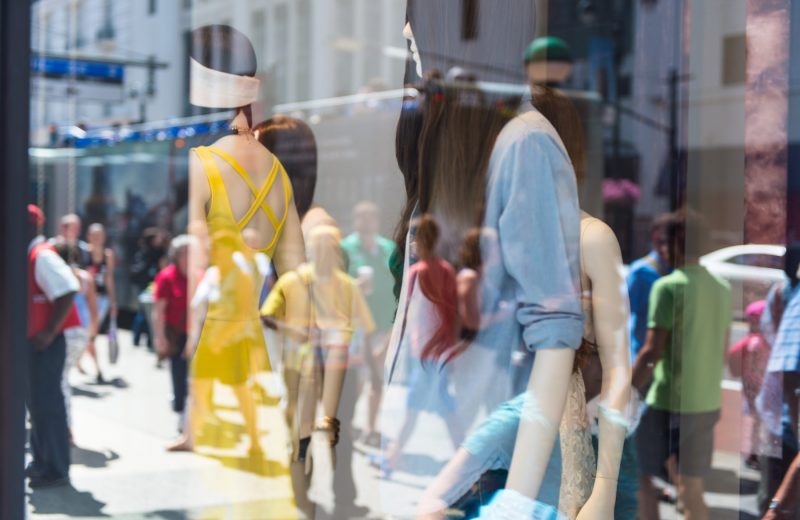The last few years have been an interesting time. From rising inflation to dealing with pandemics, war, an energy crisis, and sharply declining consumer confidence, retailers have had to adapt to the most unpredictable circumstances the economy has seen in over 50 years.
The effects of these macro trends have delivered some huge blows to retailers, with brick-and-mortar shop fronts, in particular, bearing the brunt. Many have only survived this economical evolution by adopting omnichannel strategies and really stepping up their online presence. The real success stories are the businesses that have become more creative and original with their customer engagement approaches and implemented strategies that are customer-centric.
Regardless of these economic shifts, 2022 has been a transformative year in retail and a constantly developing retail landscape means retailers must continue to step up their game if they want to thrive in 2023.
The shifts we’ve observed across the economy have shaped not only what consumers buy but also how they make their purchases. To stay on top of retail trends and incorporate them into your business and marketing strategies, here’s what you should pay attention to in 2023 and beyond.
- Social Commerce
- Influencer Marketing (Livestreaming, TikTok/Instagram Marketing)
- Personalization
- Contactless Shopping
- Blockchain/Cryptocurrency/Digital Wallets
- Voice Commerce
- Buy Now Pay Later
- Same-Day Delivery
- Sustainability
- International options
- Private Labels
- Virtual Fitting Rooms
Together with Sunrise presenter and Small Business Expert David Koch and CMO of ANZ Worldline Payment Solutions, Anne McDonnell, have both shared their key insights on the Preparing your business for 2023 webinar hosted by ANZ Worldline Payment Solutions on the 3rd of November 2023.
During the webinar, the discussion focused on three key retail trends and tips for how retailers can best respond to customers’ needs in 2023.
- Consumers want a multi-channel experience
- Removal of distinction between in-store and online
- Personalisation on the rise
Although the past three years have proven both fascinating and scary for the industry. Retailers have proven themselves more than capable of combatting the instability caused by the pandemic, by offering personalised experiences, and fiercer customer engagement within a livelier shopping atmosphere.
The National Retail Association’s 2022 Consumer Sentiment Report created to provide key insights into consumer behaviours in retail, found that the retail industry is indeed changing and consumers now have different expectations in the retail environment. Here are six key consumer expectations that are worth strategic consideration in retail right now:
Inflation concerns
Inflation has Australians digging deeper into their wallets every month to pay for essentials. 71% of consumers that have been surveyed in the 2022 Consumer Sentiment Report have changed their spending behaviours to keep up with inflation, which has resulted in them buying less but spending more to get it.
The inflation impact is happening across all spending categories, like apparel, footwear, household goods, dining out, and fuel. Businesses must proactively prepare for behavioural changes as consumers navigate rising concerns of inflation to avoid another recession.
Control over spending
Consumers want more control over spending and the cost-of-living crisis has caused people to change the way they spend online.
From insights found in the Playsafe survey, the cost of living crisis is reshaping online payment habits with data proving that consumers are shifting toward methods that allow them to track spending more accurately.
- 59% use debit cards
- 51% use credit cards
- 33% use digital wallets
Sustainable product Demands
As shoppers become more financially conscientious, sustainable products become an important factor in purchasing decisions. According to the 2022 Consumer Sentiment Report, 25% of consumers are willing to pay more for sustainable products that are value-adding and impactful to the environment.
Improved commerce spending on social networks
Facebook and Instagram have led the social commerce movement for the past few years, but TikTok has been creeping up fast behind them as stated in a new report for Tiktok’s Path to Purchase.
TikTok has become a powerful social media platform for businesses discovering and taking on the e-commerce movement. Brands like Adidas, Crocs, and Gymshark have had major success with their TikTok campaigns, and many more are following.
Advancement in Direct-to-Consumer-first model
Beyond the purchases and costs, consumers simply prefer the experience of Direct-to-Consumer (DTC) that brands offer. One study from the Kelton Global survey, found that consumers believe single brands that only sell goods to individual customers and not businesses, offer a more personalized experience. This is because DTC offers a more distinct experience — personalising to an individual shopper’s needs, effectively showcasing brand values and offering consistent quality. 42% of online shoppers expect to buy more directly from third party digital brands while 66% of online shoppers have purchased directly from the brand in the past 3 months.
Pandemic shopping behaviors reset
A Klarna and Glossy study found that consumers are centering their buying decisions based on comfort, self-care, and well-being since the pandemic. In addition to the Klarna survey, the data showed the following sales trends between 2021 to 2022 in beauty and clothes categories:
- Sleepwear was up 348%
- Face care was up 7,533%
- Bath oil was up 2,897%
This also means that since this period, “social gathering” item sales have surged as people step out from their work-from-home clothes and head back into the world.
To put it briefly, the confidence consumers need to get them over the line in retaining a solid relationship and making the final purchase has primarily circled around the new and innovative experiences retailers offered their customers that resulted in their success during lockdown and strategies for merging digital technologies within brick-and-mortar stores.
These statistics that show the long-term impact COVID-19 has had on shopping habits and consumers’ expectations will lead Australian businesses in the right direction to expand their business roadmap and enable retailers to easily offer the newest and most innovative shopping experiences for 2023.
Article by Dani Giardina
National Retail Association Marketing Unit


